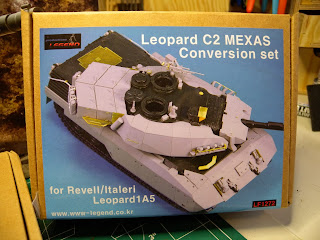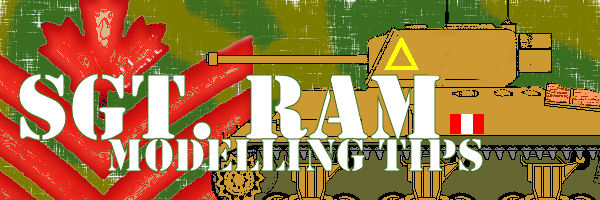
Resin aftermarket parts can add a lot of extra detail to a model kit, and with a little extra work and patience there is nothing to be a afraid of. Extra detail for models is becoming more regularly available, as there is now a lot of companies that specialize in aftermarket detail that the kit manufacture may have omitted for one reason or another. Aftermarket parts also provide conversions, changing the production variant of a vehicle, or creating a vehicle for different uses. In these cases, you will find most conversions are done in resin.

Resin, while almost like plastic, has to be dealt with a little different. Resin in most cases in cast in rubber-like molds, while plastic is molded in metal molds. Due to this, greater detail can be cast into the resin. You will find resin to be a little more harder, and brittle then most plastics, which may make it a little harder to work with.

When starting with resin, some key tools to have on hand are a good hobby knife, a good razor saw, sand paper or sanding sticks, and glue. Normal plastic glue will not work on resin, the best options are epoxy or Cyanoacrylate Adhesive (CA), otherwise known as Super Glue. Most modellers prefer CA due to its quick drying time. Epoxy can be used, especially if there is a need for a longer working time.
Most resin parts will come attached to a cast block, similar to a plastic sprue. I some case that attach point will be relatively, and thick. This can be score with a hobby knife, but I find using a good razor saw speeds up the process and gives a cleaner cut. Once the part is off, it will normally need to be sanded a little to clean up the cut.
It should be noted that resin dust should not be breathed in, and when cutting and sanding resin I highly recommend wearing a breathing mask.
Once the part is cleaned up, it will be ready for attaching to you model. Depending on the size and location of the part mount, may help determine the type of glue to use. The majority of parts will attach with CA. CA comes in multiple viscosities, thin, thick, runny, non-runny, etc. In most cases, I use a thin CA, as it will have a faster set time, ie. 5 seconds. For some larger pieces that may require a little more time to get into place correctly, I use thicker, as the set time will be between 20 and 30 seconds.
There are two methods of applying thin CA, one with an applicator like a microbrush, toothpick, or specially designed tool. For me, in most cases, I use a tooth pick, it is easy and inexpensive. If you have issues picking up glue with a toothpick, try cutting a small slot at the end. This is a great method for applying small amounts to a pinpoint location. If you need to apply a little more, a microbrush will help. In some cases, for long seams for example, I will use a teflon tube that fits on top of the bottle, and has a small flow that will allow getting the into the seam.
Prior to painting, I suggest that you apply a good primer, the three I have used with good results are Tamiya (in the spray can), Alclad Micro Primer, and Vallejo Primer. While I do prefer the Tamiya for its sticking power, the others work well if the resin is cleaned well.
Once completed resin kits, conversions, and detail sets can provide the extra level you are looking for, don't be afraid and give resin a try, you might like the results.
